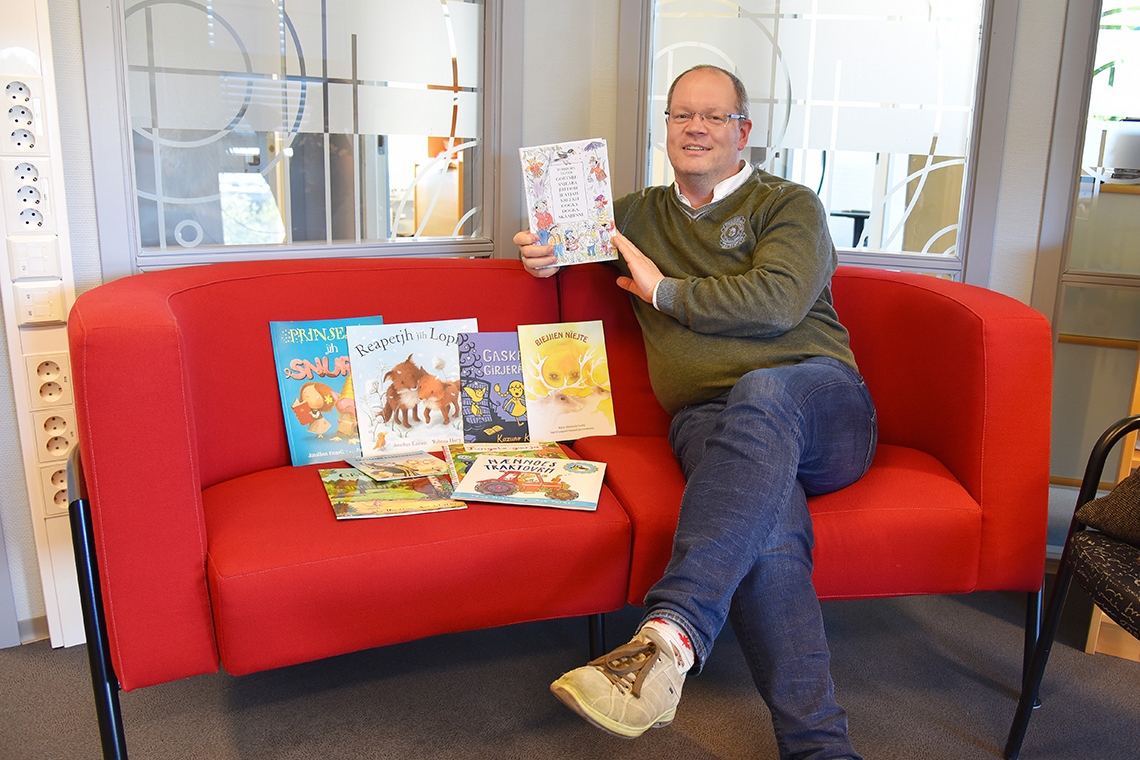Library turns publisher in order to promote indigenous language reading
09 August 2019
In a further contribution to our collection of examples of how libraries protect, preserve and promote indigenous languages and the communities that speak them, the below example comes from Trøndelag county library in Norway. We are grateful to Morten Olsen Haugen for the below contribution.

For the last 5 years, Trøndelag county library in Norway have been working together with the Saami community to create more children’s books in the south Saami language. With an approach adapted from library reading programmes, their aim was to publish a variety of translated books intended to meet the children’s own choice for entertainment reading.
Their catalogue of 86 books and audiobooks now includes works as Gruffalo, Kazuno Kohara’s Midnight library, Gemma Merino’s Crocodile, a dinosaur nonfiction, and books by Jonathan Emmett and Norwegian icon Thorbjørn Egner.
The Background of Scandinavia
There are eight different Saami languages, of which three are used in schools and by the government in Norway and Sweden, Southern Saami being the smallest of these three. The estimated number of southern Saami native speakers vary between 600 and 2500.
The Saami people are well integrated into Scandinavian societies, and they are fluent in their country’s majority languages. They are also well educated, proud of their heritage, and many young families are eager to regain their lost language.
The core activities for the county libraries of Norway is to support and counsel the public municipal libraries and school libraries. They also provide inter library loans, mobile libraries and some services for minority speakers. Running a small-scale publishing house together with Saami Language centre like Gïelem nastedh and Gïeleaernie is however quite unique for a county library.
What is different?
The stereotypic indigenous children’s book is written by a native speaker – perhaps a teacher, with a content of traditional legends and manners, or if contemporary, with a narrative discussing how to maintain traditional virtues and identity in a changing world. The illustrator would also be native, perhaps an amateur related to the author.
In Trøndelag, they deliberately wanted to challenge this. Saami children are familiar with contemporary popular culture, any the library wanted to offer them something cool and modern that they would read by their own choice.
– While we acknowledge the need to develop indigenous voices and literature, we could not sit and wait for these books to emerge, says advisor Morten Olsen Haugen of the county library.
-We needed to publish a large quantity of books at a rapid pace. When we started, there were 2-3 new children’s books in southern Saami each year. We’ve published more than 10 each year.
There is also the matter of language policy here. We want to bring the Saami language outside the traditional areas of their users’ culture. Saami children should be able to use their heart language even when they read – and talk – about pets, football, pirates, princesses, ghosts and monsters.
Not so difficult
There are several stages in any publishing project. In our experience, neither of them is very complicated.
We’ve cooperated well with major publishing houses in Norway, Sweden, UK and USA on publishing rights, even though we are a small customer to them. When we work with books already published in another language, most of the editorial and pre-print work is already done.
Our main problem is how to produce high quality translations. There aren’t enough translators. Hence, our concern is to make the best possible use of the translators available. Our translators and proof-readers are busy working with a multitude of aspects in southern Saami language and culture: Bible translation, developing school books and multimedia tools, teaching, researching and implementing their language into several new fields of society, as well as teaching traditional crafts.
There are only a few educated translators, many missions to be completed, and several institutions in need of translators. As a result, an integrated element in our work is developing a new generation of translators among the young educated Saami in their 20’s and 30’s.
Wider focus
Our work is generally well received in the Saami community. Both Saami politicians and parents give generous feedback. My favourite feedback is the young mother who was worried because she had lost count. “Now that there are new books all the time, I’m afraid I’d miss out some of them”. That’s indeed a luxury problem.
In the future, we hope to develop a more mature and diversified publishing policy. Though bright coloured picture books are funny to publish and a delight for the readers, we also need to serve the needs of older children and teens. Books for readers aged 11-18 is our new priority. We published an abridged version of Beowulf in March and will be publishing Georg R.R. Martin’s Ice dragon in September.
As we evolve as one of major publishers of Saami children’s literature, we also need to consider other aspects than entertainment reading and a high quantity of books. Books reflecting Saami culture will be more important to us in the future, given our position. We’ve also already started our search for foreign books about indigenous adolescence experiences.
Find out more about IFLA’s involvement in the International Year of Indigenous Languages.